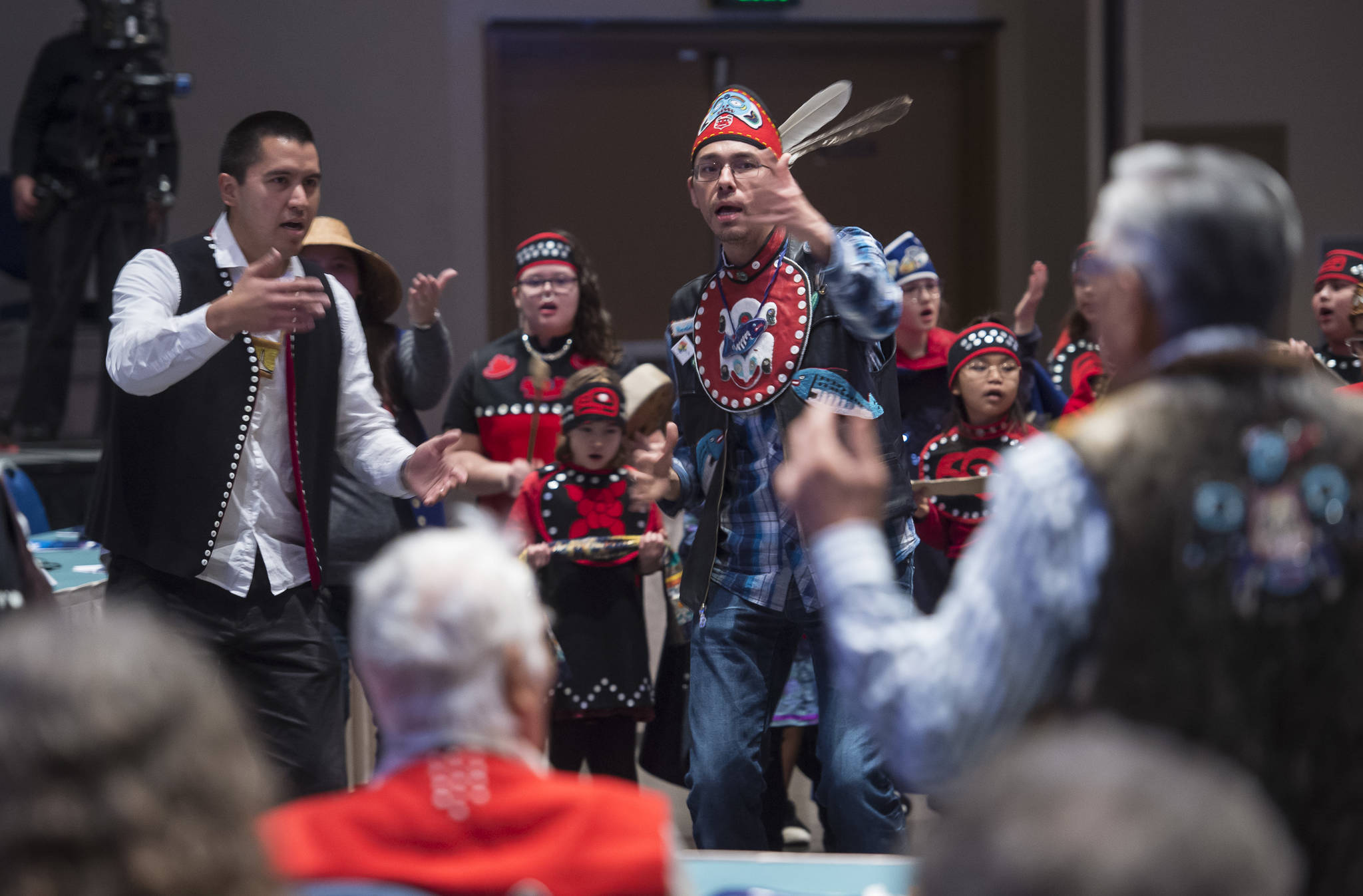The drama from this chaotic year didn’t skip arts and culture in Juneau.
There were financial scares for the longtime professional theater, single-vote decisions that shaped the appearance of downtown and how the arts are seen in Juneau, fiery discussions about cultural appropriation and a state emergency was declared for Alaska Native languages.
But there were also plenty of feel-good developments throughout the year, too.
Discussions about culturally sensitive collaboration were had, funds were raised, the largest gathering of Native language speakers in decades was held in Juneau and a busy downtown intersection received a new name and bronze house posts as enduring testaments to Alaska Native culture.
There were also first-ever developments that broke the mold.
Juneau had its first-ever visit from a U.S. Poet Laureate on business, and a Tlingit artist became the first recorded female to carve and raise a totem pole with her work in Yakutat.
These are the seven stories that defined arts and culture in Juneau in 2018.
What happened: Wearable Art 2018 prompts backlash and focus on cultural sensitivity.
Less than two months into 2018, a piece in the annual Wearable Art fashion show sparked debate about cultural appropriation. “Doragon” was heavily influenced by Asian art and fashion, but some felt it crossed the line and promoted stereotypes. Juneau Arts & Humanities Council apologized for offending anyone, a series of public discussions were held to clear the air and new guidelines encouraging sensitivity were introduced for Wearable Art 2019.
Why it matters: Discussions of cultural appropriation are part of the national discourse regarding art, and the Juneau community was forced to confront the issue too. It also led to guidelines that will impact future Wearable Art shows.
What Happened: Perseverance Theatre’s finances rebound for 40th season
Perseverance Theatre furloughed its employees in June after accumulating six-figured debt, and the future of the theater was in doubt. However, a successful fundraising campaign and $650,000 in private donation ensured Season 40 could happen without the spectre of financial pressure looming.
Why it matters: The show has gone on. Instead of not happening, the theater’s 40th season has included productions with Irene Bedard of Disney’s “Pocahontas” fame and an original production with local roots.
What happened: New JACC misses ballots but makes fundraising progress.
The City and Borough of Juneau Assembly in August voted down a measure that would provide CBJ funding to a proposed replacement for the Juneau Arts & Culture Center, which delayed plans to demolish the JACC. However, fundraising efforts continue and more than $5 million has been raised for New JACC that may or may not connect to the JAHC-managed Centennial Hall.
Why it matters: The New JACC would significantly change the way part of downtown looks and create a larger, new venue. Despite a lack of commitment of public funds, the project has shown enough viability to draw in corporate support.
What happened: U.S. Poet Laureate makes first official visit to Juneau.
Tracy K. Smith, the second-term U.S. Poet Laureate, visited the Alaska State Library, Archives and Museum in August to read poetry and answer questions as part of her ongoing vision to visit overlooked portions of the country.
Why it matters: It can no longer be said that a Poet Laureate has never visited Juneau on official business. While Smith was here, she left behind dozens of copies of a personally curated poetry collection in the hands of Juneauites.
What happened: Front and Seward streets get new house posts and new name.
In August, three bronze house posts by Tlingit, Haida and Tsimshian artists were erected in front of Sealaska Heritage Institute’s Walter Soboleff Building. During the posts’ dedication, SHI President Rosita Worl made an off-the-cuff remark that area around them should be known as Heritage Square. By late September, the heavily traveled intersection was officially named Heritage Square by outgoing Mayor Ken Koelsch and the City and Borough of Juneau Assembly.
Why it matters: The house posts are a tangible and eye-catching symbol of Alaska Native culture’s endurance, and one of the busiest foot traffic intersections in the city has a new name that pays homage to Native peoples.
What happened: Alison Marks became the first Tlingit woman to carve and raise a totem pole.
When Marks, a Tlingit artist, raised “Yaa Khaa Kootéeyaa,” which was a tribute to her grandfather, near her grandfather’s house, she became the first recorded Tlingit women to carve and raise a totem pole. The pole is 10-feet-tall and was carved with guidance from master artists and stands in Yakutat.
Why it matters: It shows firsts are still happening in a culture that is tens of thousands years old, and gender norms can be eschewed while traditions are honored.
What happened: The largest gathering of Alaska Native language speakers was held in Juneau.
Voices of Our Ancestors gathered many of the world’s fluent speakers of Alaska Native Languages in November in Centennial Hall for a three-day summit that was the first of its kind. Words both new and old were spoken.
Why it mattered: The summit encouraged the preservation and revitalization of Native languages the same year Gov. Bill Walker declared an emergency for Alaska Native languages.
• Contact arts and culture reporter Ben Hohenstatt at (907)523-2243 or bhohenstatt@juneauempire.com.

